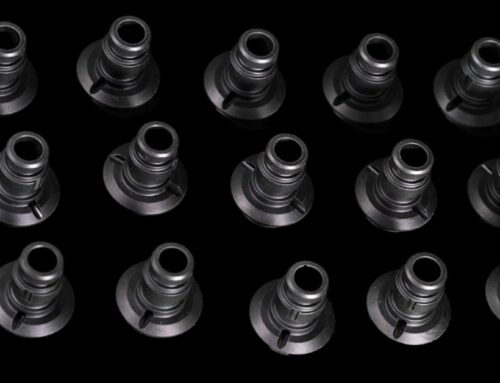These days, engineers have many plastics to select from when working on a project. However, not all plastics are created equal. This requires engineers to carefully evaluate their options. Plastics Machining Inc. can help them through this process with these eight tips for selecting the proper plastic material.
Determine Your Strength Needs
One important step in this process is to determine the mechanical strength you need from the plastic material. Certain engineering applications, such as aerospace fittings, demand materials that provide high tensile strength and resistance to severe mechanical stresses. This makes a plastic such as PEEK (polyether ether ketone) a good fit, since it offers remarkable impact resistance and durability.
Engineers must analyze anticipated mechanical loads, impacts, and the stress life cycle of components before settling on a specific material. Conducting finite element analysis or closely studying prior performance data for similar applications ensures that the chosen material aligns with these structural demands. A comprehensive understanding of mechanical requirements reduces unnecessary risks such as material failure or deformation within practical use.
Establish Your Temperature Requirements
Another good tip for selecting the proper plastic material is to determine the temperature requirements of your application. Plastics often exhibit unique responses to temperature variations, necessitating careful consideration of thermal tolerances. For components that will be used in high-temperature environments, consider materials such as Torlon® or Vespel®, as they can maintain their performance at elevated temperatures.
On the flip side, certain applications—such as cryogenic settings—may involve consistently low temperatures. Many plastics become brittle under such conditions, but materials such as Vespel® can be quite useful. Analyzing the operational thermal range is crucial during material evaluation.
Engineers must also consider the potential for thermal expansion or contraction, as this behavior may influence the component fit within an assembly. Choose a plastic material with a low coefficient of thermal expansion, which will provide you with greater dimensional stability across variable environments.
Consider Your Aesthetic Needs
You should also consider the visual appearance of plastics during your selection process. When engineers work on projects in which form must align with function, they must consider aesthetic properties such as transparency, surface texture, and colorability. Applications within consumer electronics, automotive interiors, and lighting systems often prioritize visual appeal.
For example, if you’re looking for components that manufacturers can provide in a black or off-white hue, consider purchasing parts made from a thermoplastic such as Delrin®. Or, if your application requires an amber color, try using Ultem®. The right plastic will allow you to create an aesthetically pleasing product that still meets the end user’s expectations.
Look for Materials With Chemical Resistance
When your product’s applications involve exposure to chemicals, solvents, or corrosive environments, it’s important to select a plastic that can maintain its integrity in these conditions. Chemical attacks may lead to swelling, cracking, or degradation that compromises the material’s functional durability. To address these risks, you may want to select components that feature a Rulon® seal, which will allow the plastic to stay strong against chemicals and even avoid wear.
Before making your selection, take the time to identify the chemicals that will be present in the environment of your specific application. Then, look at compatibility data to determine the right candidates for your materials.
You should also consider performing testing where you simulate exposure to these conditions over extended periods and monitor the different degradation levels. Since chemical interactions can vary significantly based on concentration, duration, and temperature, being meticulous during the evaluation will prevent you from selecting materials that might fail prematurely. Incorporating plastics with proven chemical resistance will extend the lifespan of your components and enhance their reliability even under challenging operating conditions.
Find a Plastic That Fits Your Budget
During projects, engineers must find the right product that meets their performance requirements and budget constraints. However, if engineers were to select materials based solely on price, they would risk sacrificing performance. That makes it critical for them to ensure the material can meet the application’s demands as well.
One way to meet these demands is by collaborating with material suppliers or distributors. These partnerships can provide engineers with valuable insight into how to save on costs while achieving a result that satisfies everyone.
Seek Out Available Plastic
Another important factor to consider is the availability of certain plastics. Engineers must prioritize materials that are widely available through reliable supply channels so that they can avoid procurement delays that disrupt their projects. Once again, by collaborating with suppliers, they should be able to confirm that they’ll have access to essential materials at every production stage.
Factors such as geographic location, batch lot requirements, or production scale can also affect material choices. Components with narrow tolerances or specialized grades may require coordination with manufacturers producing custom formulations. Keeping these scenarios in mind during material selection will prevent last-minute bottlenecks and allow your operations to stay efficient.
Consider Environmental Effects
It’s also wise to ensure you’re sourcing plastics that will have a low environmental impact. Considering factors such as recyclability allows engineers to choose materials that contribute less waste during fabrication or eventual disposal phases. For example, plastics such as nylon and PEEK are recyclable, allowing them to enjoy multiple lives and contribute less to the planet’s level of waste.
However, make sure you don’t make any performance compromises when selecting an environmentally friendly material. This will allow your organization to earn a reputation for being eco-conscious—while satisfying your end users’ needs.
Confirm That the Material Will Meet Industry Standards
One last tip for selecting the right plastic material is to ensure it will meet industry standards. By being familiar with standards such as UL ratings, you can ensure your components fulfill mandated safety and operational guidelines.
Working with your materials suppliers or referencing institutional resources such as ASTM (American Society for Testing and Materials) International will ensure you stay compliant. Meeting these certifications will ensure the acceptance of your products in your market and demonstrate to others that you follow proper engineering practices.
Seek Out a Trustworthy Manufacturer
After following these tips, you should be on track to choosing the right plastic for your project. One last step to take is to choose a trustworthy components manufacturer. You can find one in Plastics Machining Inc., which has extensive experience serving a range of industries, including aerospace and food processing. We utilize state-of-the-art technology to provide you with high-quality components when you need them so that you don’t experience any slowdowns in your operations.






